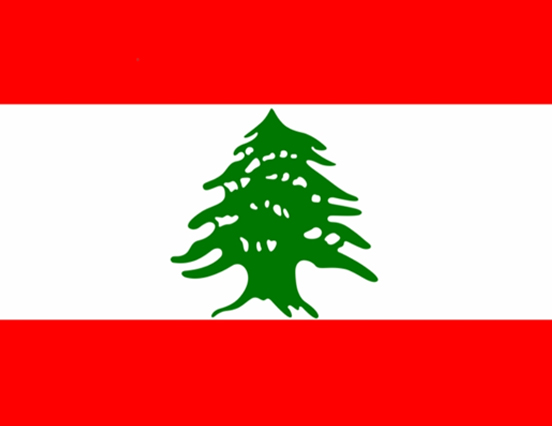The Cedars of Lebanon

The cedar tree (cedrus libani) is the national emblem of Lebanon. It is a symbol of resilience, strength, and eternal life.
The Lebanese flag features a green cedar tree in the middle of a white background, with red and white horizontal tri-stripes.

Picture of the Lebanese Flag
Historically, the cedar trees covered the mountains of Lebanon. It has been said the Phoenicians built their fleet using the wood from the cedar trees[1].
There are 72 references to “The Cedars of Lebanon” in the Bible[2]. The Bible describes the cedar tree as being strong and durable (Isaiah 9:10), graceful and beautiful (Psalm 80:10, Ezekiel 17:23), high and tall (Amos 2:9, Ezekiel 17:22), fragrant (Song of Songs 4:11) and spreading wide (Psalm 80:10-11). The abundance of which the cedar trees grew in Lebanon was considered to be “the glory of Lebanon” ( Isaiah 35:2 ; 60:13)[3].
One of the most popular and most frequented sites is in the Kadashi Valley of Bcharri and is known as the “Cedars of God” (Arabic: Arz al-Rabb). It is a UNESCO World Heritage Site (United Nations Educational, Scientific and Cultural Organization)[4].
Famous quotes of the Cedars of Lebanon:
“The righteous flourish like the palm tree and grow like the cedar in Lebanon“.
– The Bible, Psalm 92:12 –
“The heart’s affections are divided like the branches of the cedar tree; if the tree loses one strong branch; it will suffer but it does not die; it will pour all its vitality into the next branch so that it will grow and fill the empty place”.
– Khalil Gibran –
Reference
[1] https://theculturetrip.com/middle-east/lebanon/articles/11-things-all-lebanese-people-are-proud-of/
[2] The University of Dayton article: The Cedar Tree as a symbol of Mary by Fr. Johann Roten SM- https://udayton.edu
[3] The University of Dayton article: The Cedar Tree as a symbol of Mary by Fr. Johann Roten SM- https://udayton.edu
[4] There are five UNESCO World Heritage listed sites in Lebanon, being the Forest of the Cedars of God along with the Holy Valley, Byblos, Baalbek, Anjar, and Tyre. – source: the961.com.
